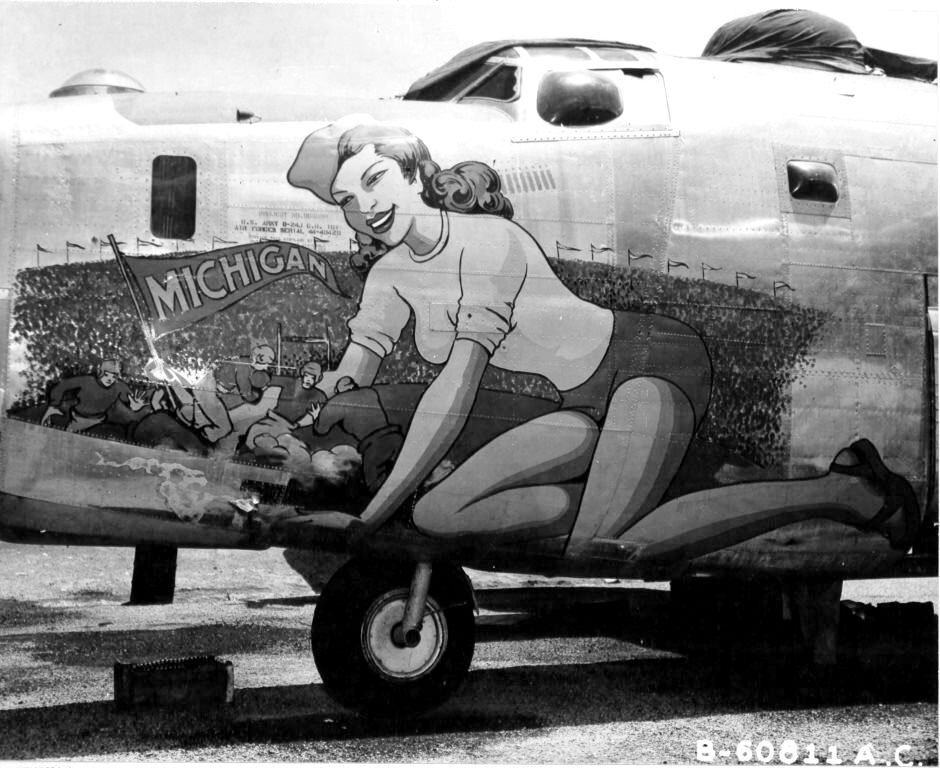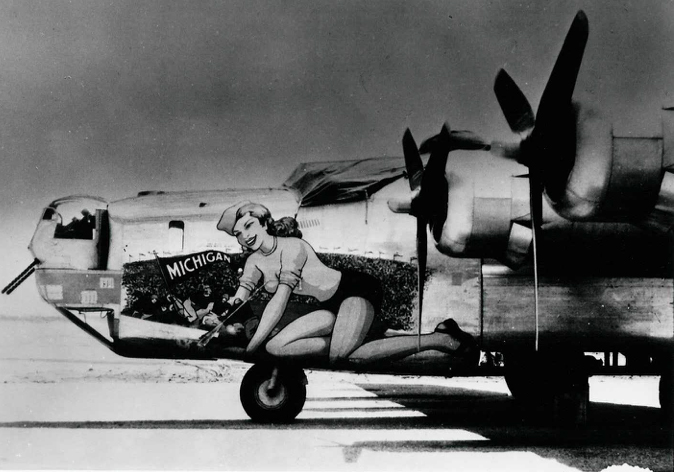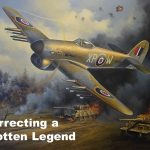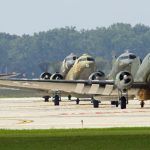April 22, 2019— The Yankee Air Museum in Ypsilanti, Michigan is actively seeking first person accounts from airmen whom served on a B-24 Liberator bomber nicknamed Michigan which flew in the Pacific Theatre during WWII. This particular Liberator is B-24J 44-40429 which served with the 64th Bomb Squadron, 43rd Bomb Group of the 5th Air Force from 1942-1946. It was decorated with a massive painting of the famous “Big House,” the University of Michigan’s football stadium in Ann Arbor, Michigan, and a U of M cheerleader as its nose art. Although the Museum does not have a flying B-24 in its fleet, it is closely connected to this type of aircraft by its location on the grounds of the historic Willow Run Airport where 8,685 Liberators were built between 1942 and 1945.
“We believe at least one of the crew on this aircraft had strong ties to the University of Michigan in general and the football program in particular,” said Ray Hunter, Chairman of the Board, Yankee Air Museum. “The Museum has been searching for years for anyone who was attached to the B-24 ‘Michigan’. As we approach the 75th anniversary of the end of World War Two next year, it’s time to renew that search.”
The Museum is looking for surviving crew members who flew or maintained this aircraft, or details from their family members. The hope is to honor the local heroes and obtain first person stories, or perhaps additional photos of this B-24.
As a pilot and Air Force Veteran, Ray Hunter also has a personal interest in the Michigan and her crew. He rose to the rank of Colonel by 1985 and reported for duty in Ann Arbor as Commander of the Air Force Reserve Officers’ Training Corps (ROTC) program at the University of Michigan. Colonel Hunter retired from the Air Force in 1988. Each year now, he frames a picture of the B-24 Michigan nose art and presents it with a special inscription to an excellent student graduating from the University of Michigan ROTC.
“It would be great to have some living history references to this plane,” added Hunter. “It’s remarkable how inspirational theses accounts can be to future U.S. Air Force Officers especially from members of the Greatest Generation who flew on a plane bearing Michigan nose art.”
Hunter explained thennose art saying that during World War Two, decorating combat aircraft was a common practice. In fact, this era is known as the Golden Age of Aircraft Artistry. The majority of the art reflected girlfriends, wives’ names, names of towns, or other reminders of the “Home Front.” Nose art regulations, if they existed at all, were very relaxed and many examples were indeed risqué, to put it mildly. According to Hunter, with heavy losses of aircrew and aircraft during bombing missions, there was really no pressure to be politically correct when it came to how the aircraft were adorned.
The B-24 Liberator four-engine bomber was a popular palette due to its large expanse of relatively open painting space on the nose of its massive fuselage.
SSgt Sarkis Bartigian is credited with painting the nose art on the Michigan. Bartigian was a renowned commercial artist whose only occupation during World War Two seemed to be creating and painting nose art on large aircraft. His body of work is extensive, and some of it may be found at the following link HERE.
“Most of the nearly 18,500 B-24s manufactured, including the Michigan, were scrapped at a smelter in Arizona and melted down after World War Two ended,” said Hunter. “The B-24 Liberator Michigan was not built at the Ford Willow Run Bomber Plant and only four Willow Run bombers remain.”
Hunter added that two of the remaining Ford-built B-24s are located at museums in England, and the others in Canada and Louisiana. Please contact Ray Hunter at the Yankee Air Museum if you have information regarding the B-24 Liberator known as Michigan. His email address is: [email protected] .

























